“Yall, tell me what color we should paint the inside of this fountain basin?” I asked this, assuming everyone would agree with my experience and unassailable taste and that the fountain would be black or Charleston green.
But these young fellas working with me had their own opinions. Three Mexican Americans and two Super-Suburban Americans. All voted unanimously for swimming pool blue.
Yuck. I objected. Mostly to myself. Surely, I thought, when Tom, my husband, gets here, he’ll say go with Charleston green. Most important decisions get run by Tom, so I was relieved when he showed up. But not when he said, “Blue. Maybe a sort of denim blue.”
I reminded myself that these days, when I do my most well-received garden lecture, I make a plea for one thing in particular. I tell stories and share examples of how hate and racism have severely limited what Southern Gardens could have been. We fail, and we pay the price; we ignore, are ignorant too, or we nurse the open wound; the lack of long-integrated African American culture, plants, and history.
Then, I point out that South Carolina has the highest inflow of migration of any other state in the union. And I make the plea: We cannot fail again. To make the best new Southern gardens, we need to invite in the tastes, ideas, and dreams of migrants from Massachusetts, Michigan, and Michoacan.
I stirred the blue paint.
That night, Hanah, the homeowner, texted, “Tell me about this basin.”
I did, “I know it looks rustic compared to your very refined back porch. But in garden design, it’s critical to balance the refined with the rustic. Always. We need a reminder that this is not natural, this is a place created by man. That rustic fountain does it.” I was trying not to mention the swimming pool blue.
“Did you know I love cobalt blue? You haven’t even seen my garden pots; they are all blue. You haven’t seen my kitchenware; all blue. I like the rustic basin. I love the color. You may not realize this, but my family recently immigrated here, too. Sure, I’m from Philadelphia, but I have lots of close family still living in India.”
Enjoy photos of the process of this garden design, the making of the basin, and planting the garden. By the
end of summer, I’ll share some growing and flower photos.
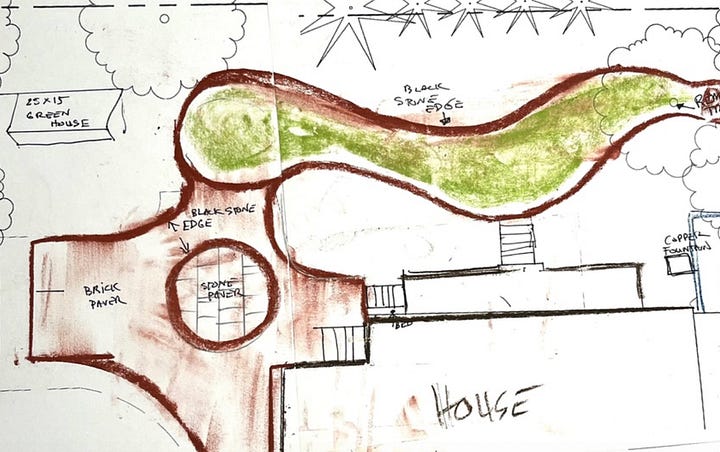

Design always starts with hand drawings and then is translated to software, which makes it tidier and more precise. That also allows for the calculation of plant numbers as well as the amount of brick, mulch, and irrigation.
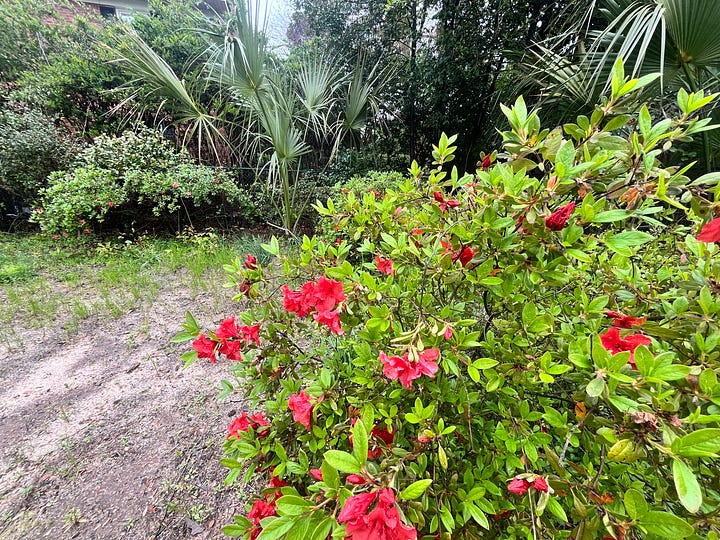
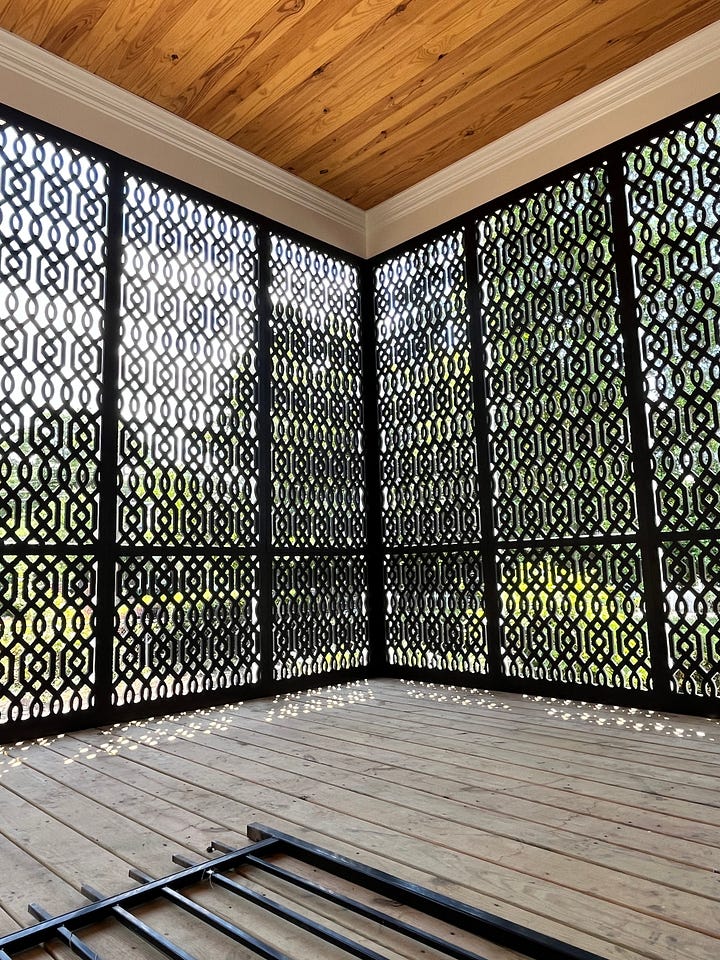
Things on-site always inform the garden design, such as existing plants and architectural details (such as the porch screen, which is inspired by an architectural detail common in India called ‘jolly’ — ie, poured concrete porch screens. And, of course, the owner’s tastes and abilities.
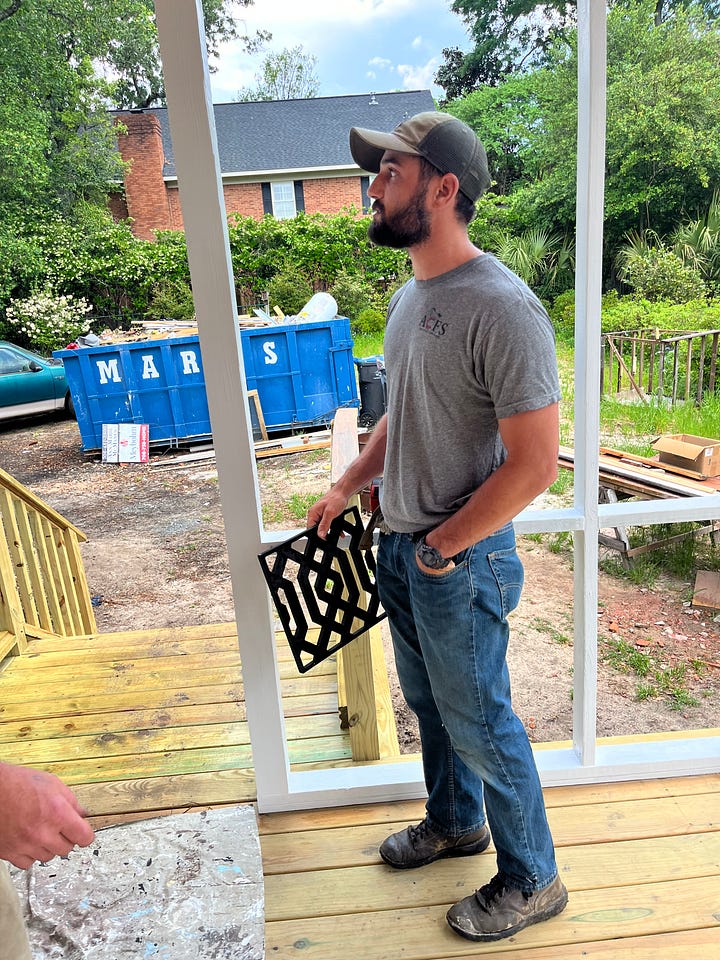
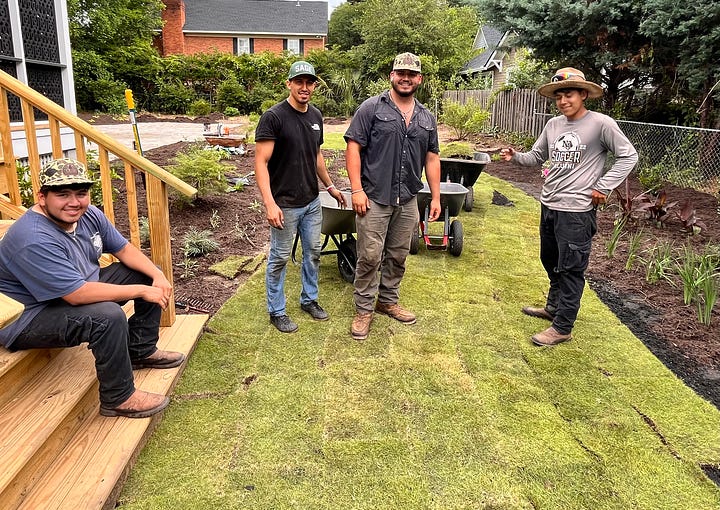

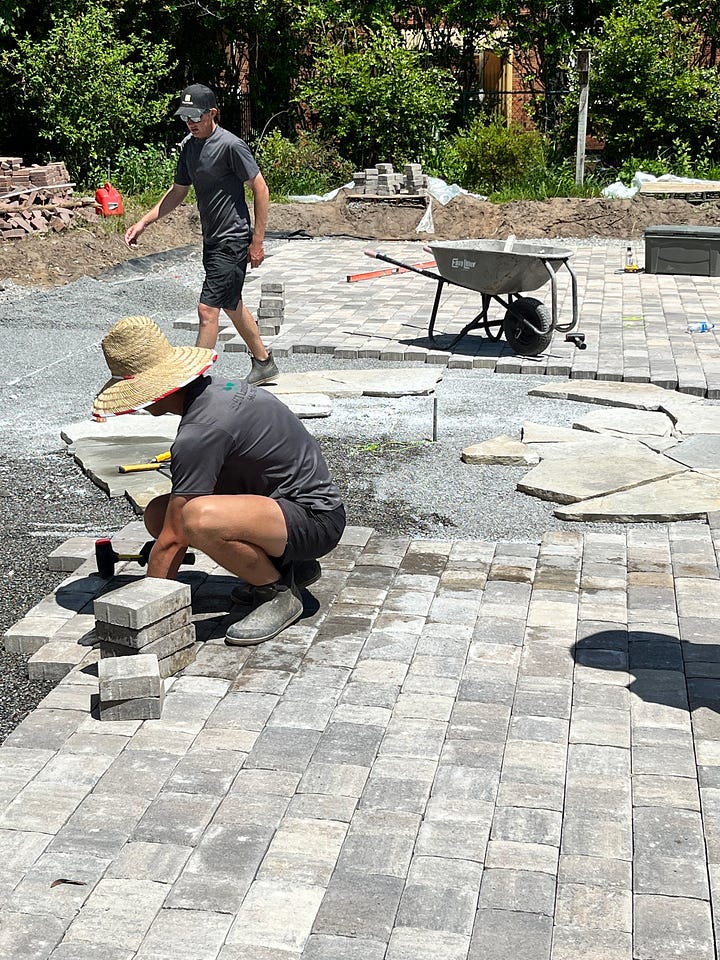
Everything depends on a dedicated crew like these guys. Working together last week, two of the young guys showed excitement about visiting New York. I always encourage travel, and this afternoon, they leave for their first trip to the Big Apple!
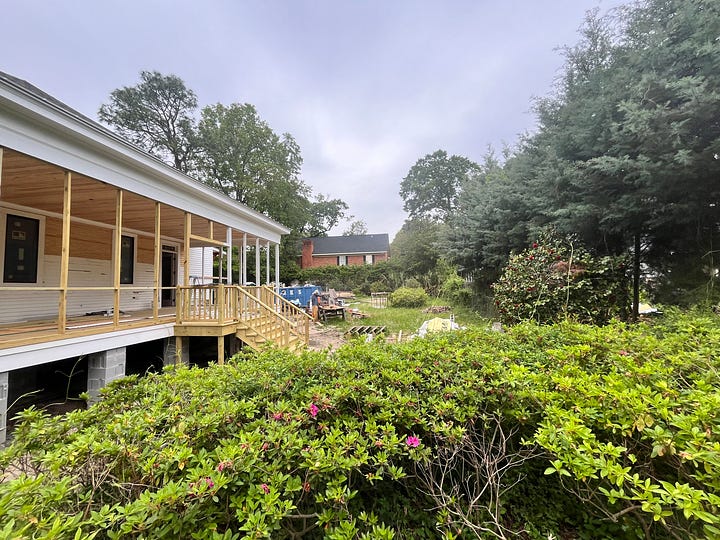
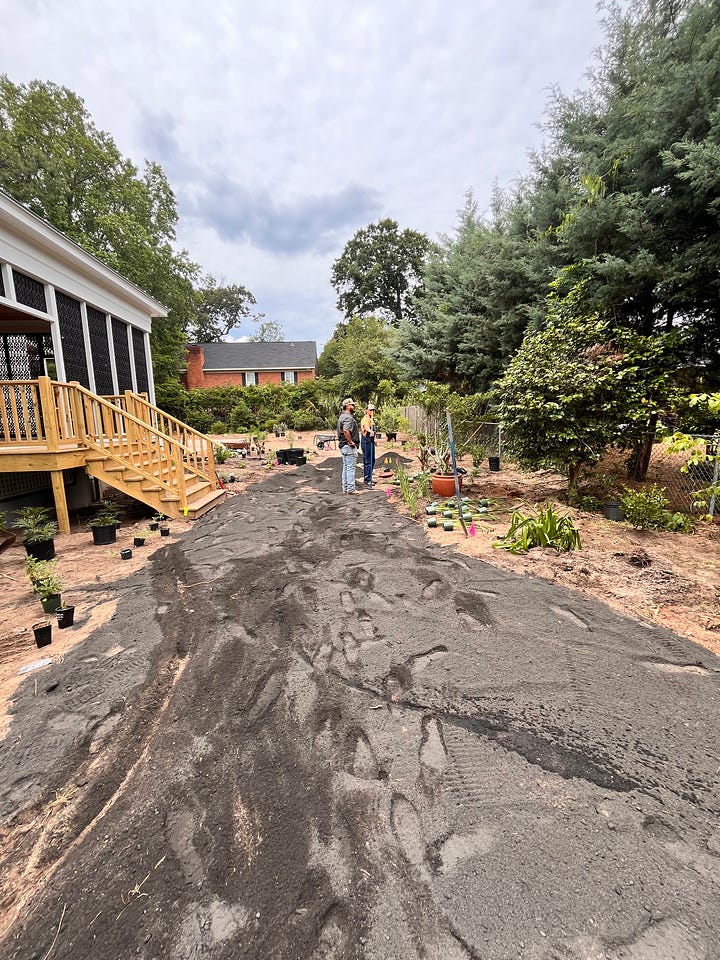
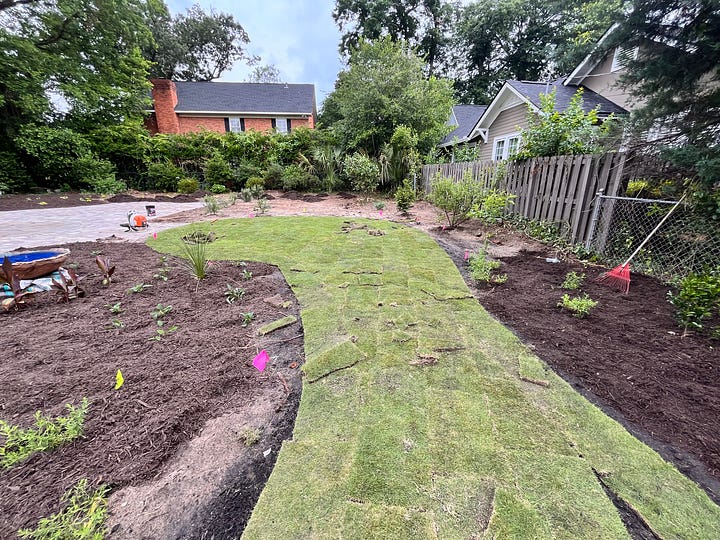
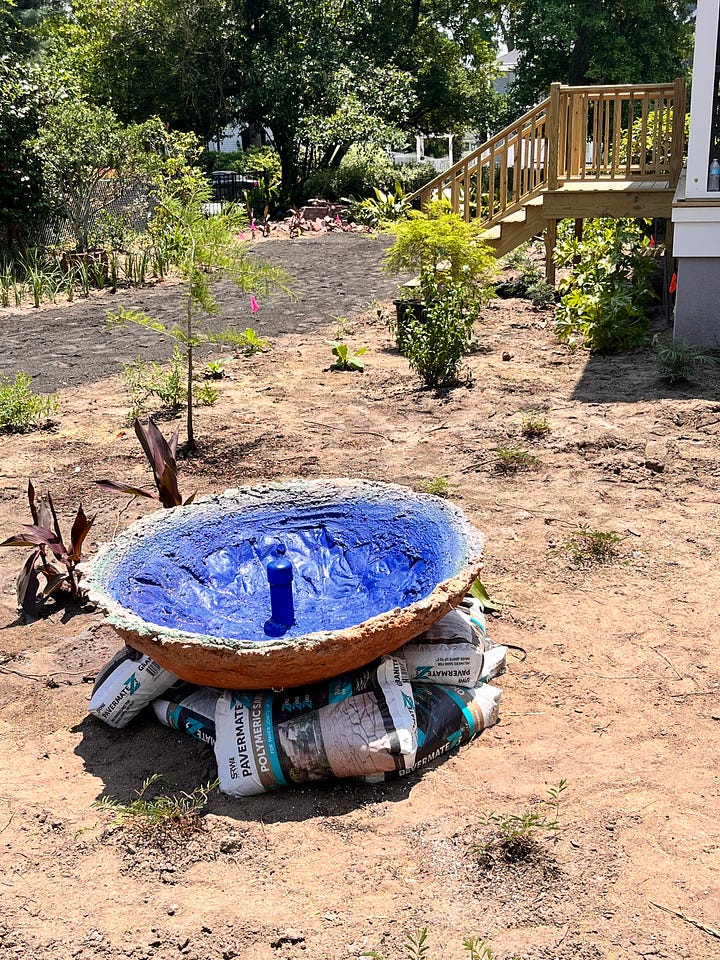
There are tons of details to attend to, too. We earth-formed the 600-pound, concrete basin. It will eventually sit on huge, rustic stones.
Unlike instant landscapes, gardens take time to grow in. We use a few commercial plants, but mostly, we seek special plants that add beauty and tons of other benefits, from shade to fruit to wildlife resources. Gardens grow and change. Gardens are alive. Watch for photos of this garden as the plants fill in over the summer and over the years.




Can't wait to see the results! And I love the blue!
You have such a good life.